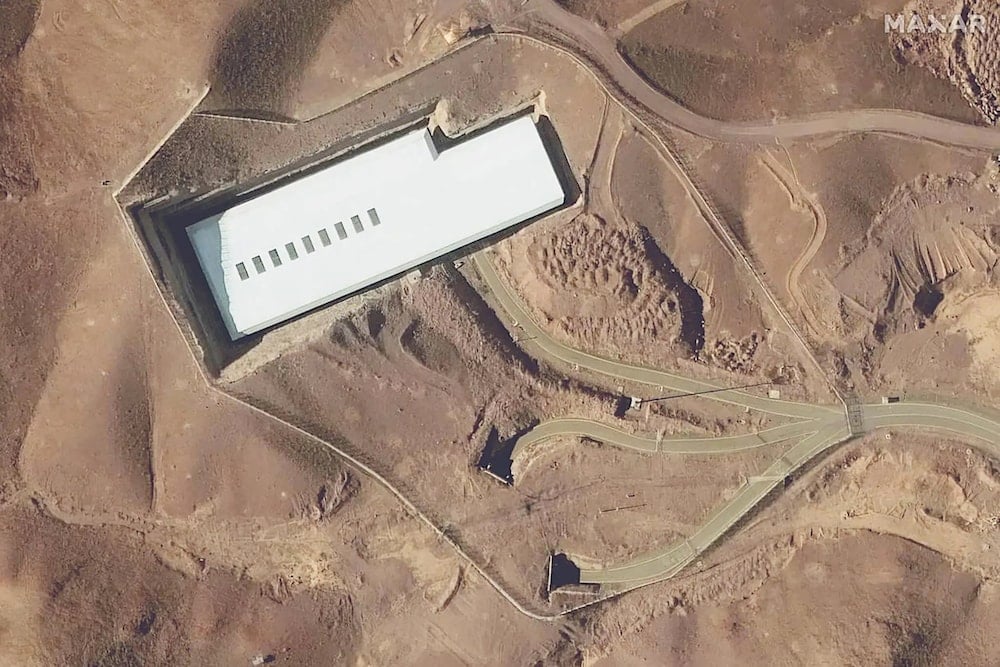'Israel', US face risks in targeting Iran's underground nuclear sites
A RUSI report warns that Iran’s deeply buried nuclear sites like Natanz and Fordow are beyond reach, even for joint US-Israeli forces with advanced bunker-buster bombs.
-

A satellite photo from February showing the Fordo uranium enrichment facility, south of Tehran (AFP)
Recent Israeli strikes on Iranian military and nuclear-related facilities have revived questions about whether it is even possible to destroy Iran’s deeply buried nuclear infrastructure.
A March report by the Royal United Services Institute (RUSI) suggests that any attempt to do so would be highly difficult, dangerous, and ultimately uncertain in its outcome.
According to the report, taking out Iran’s underground enrichment sites, including Natanz and Fordow, would require extensive firepower, specialized weaponry, and direct US military support. Even then, success would not be guaranteed.
The study warns that such a mission should be seen as an “option of last resort,” given the risks of full-scale regional escalation and the technical challenges involved.
The Natanz site, one of Iran’s main uranium enrichment facilities, was among the targets hit in the latest Israeli strikes. However, the degree of damage remains unknown, particularly since its most sensitive infrastructure lies underground.
Estimates cited in the RUSI report suggest that parts of the Natanz facility are buried around 8 meters (26 feet) below ground. While "Israel" is believed to possess munitions that can penetrate up to 6 meters, the margin may be insufficient, especially if the underground structure is reinforced with layers of hardened concrete or rock.
Fordow facility likely out of reach for both US and 'Israel'
Iran’s second major enrichment facility, the Fordow plant, is believed to be buried at a much greater depth, possibly between 80 and 90 meters (262 to 295 feet) below the surface. According to the RUSI report, this would place it beyond the reach of even the US military’s most powerful bunker-buster bomb, the GBU-57 Massive Ordnance Penetrator, which can penetrate around 60 meters.
Adding to the challenge, the GBU-57 can only be deployed by the US Air Force’s B-2 stealth bombers, an asset the Israeli regime does not possess, even if the US were to supply the weapon itself.
Beyond depth, Iran has employed architectural and engineering methods to make its nuclear facilities even more resilient to aerial bombardment. The RUSI report notes that facilities with narrow access shafts, multiple blast doors, and separate entry/exit tunnels are far more difficult to destroy than those with a single, large chamber or shaft.
This layered design could significantly reduce the likelihood of success, even if multiple precision-guided munitions were deployed in succession.
As tensions escalate, the report offers a clear warning: even a coordinated US-"Israel" effort to destroy Iran’s nuclear capabilities may fall short of its objective, while simultaneously risking a wider war.
Given the limitations of current munitions, the depth and complexity of Iran's enrichment sites, and the potential for catastrophic fallout, the RUSI study concludes that targeting these facilities is a last-resort option, not a tactical shortcut.

 3 Min Read
3 Min Read









